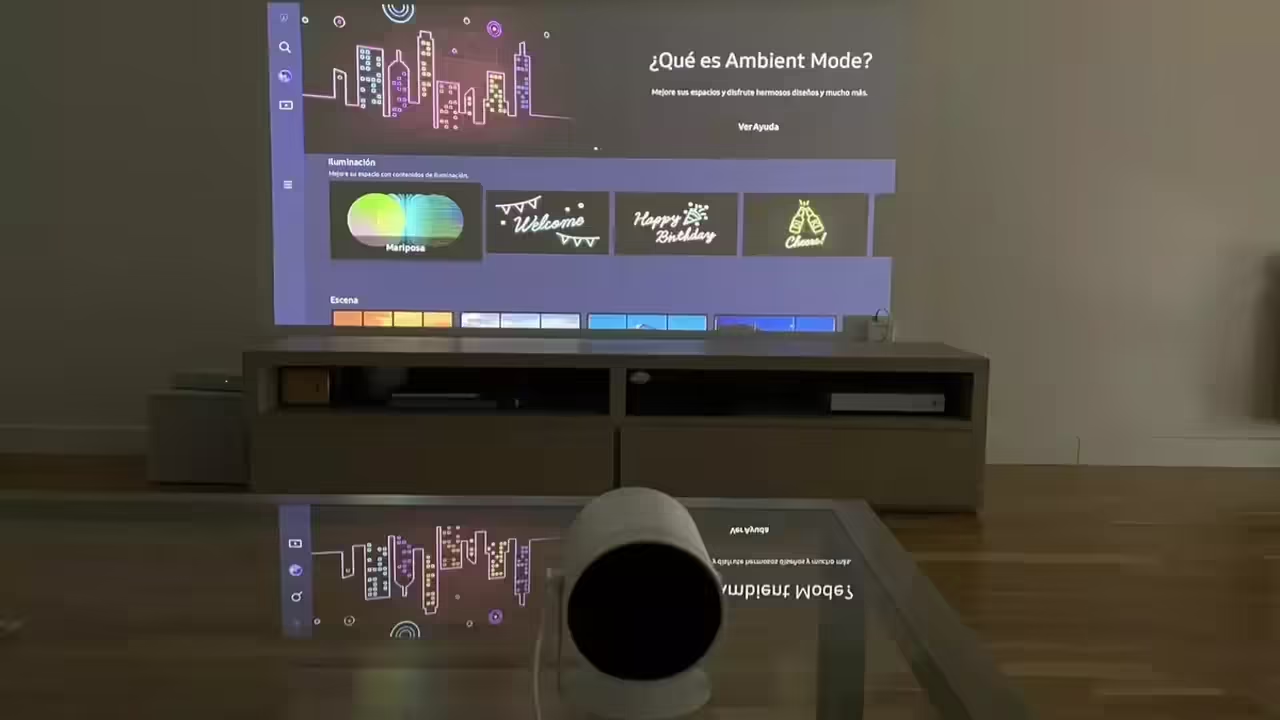
The Importance of Residential Energy Alternatives Today
In a world increasingly aware of environmental challenges and the need to reduce carbon emissions, the search for sustainable energy alternatives has become a global priority. In this context, residential energy alternatives have emerged as a crucial field for innovation and action.
Currently, households represent a significant portion of global energy consumption and, therefore, greenhouse gas emissions. This fact highlights the importance of finding cleaner and more efficient energy solutions in the residential sector.
Residential energy alternatives not only help reduce the carbon footprint of homes but also offer economic and social benefits. By adopting renewable energy sources and efficient technologies, households can lower their long-term energy bills, increase their energy independence, and contribute to the development of a more sustainable economy.
Technological Advances and Available Options
The exponential growth of technology has expanded the range of options available to homeowners seeking energy alternatives. Among the most prominent options are:
- Solar Photovoltaic Energy: Solar panels convert sunlight into electricity, providing a clean and renewable energy source for homes.
- Domestic Wind Energy: Small-scale wind turbines can harness wind power to generate electricity in suitable residential environments.
- Biomass and Biogas: Using organic waste to generate heat and electricity is a viable option in many areas, especially rural areas.
- Efficient Heating and Cooling Systems: Technologies like geothermal heat pumps and solar thermal heating systems offer efficient alternatives to traditional fossil fuel systems.
- Smart Energy Management: Home automation and energy management systems allow optimizing energy consumption at home, reducing waste, and improving efficiency.
Challenges and Future Opportunities
Despite the growing interest in residential energy alternatives, significant challenges persist. The initial investment required for the installation of renewable technologies can often be a hurdle for many homeowners. Additionally, the lack of supportive policies and resistance to change in some sectors may hinder the widespread adoption of these solutions.
However, there are also exciting opportunities to address these challenges. Ongoing technological advancements are making energy alternatives increasingly accessible and cost-effective. Likewise, growing governmental support and public awareness of sustainability importance are creating a conducive environment for the adoption of these solutions.
Solar Energy: An Endless Source for Modern Homes
Solar energy has positioned itself as one of the most promising and sustainable alternatives to meet the energy needs of modern homes. Harnessing abundant sunlight, solar panels convert solar energy into electricity cleanly and renewably. Below details how solar panels work and their installation in homes, along with their advantages and disadvantages.
Functioning of Solar Panels
Solar photovoltaic panels are composed of photovoltaic cells that capture sunlight and convert it directly into electricity through the photovoltaic effect. Each cell is made of semiconductor materials, such as silicon, which release electrons when exposed to sunlight.
When sunlight hits the photovoltaic cells, the released electrons generate electric current. This current is collected by the cables connected to the cells and taken to an inverter, where it is converted into alternating current (AC), which is the form of electricity used in homes.
Installation in Homes
The installation of solar panels in homes generally follows these steps:
- Site Evaluation: A site analysis is conducted to determine the amount of available sunlight, the optimal orientation, and angle for installing solar panels.
- System Design: A customized system is designed according to the home’s energy needs and site characteristics.
- Panel Installation: Solar panels are mounted on the roof or standalone structures using suitable mounts.
- Electrical Connection: Solar panels are connected to each other and to the inverter, which is connected to the home’s electrical system.
- Permitting and Grid Connection: Necessary permits are obtained, and the system is connected to the electrical grid if excess energy production is to be sold.
Advantages and Disadvantages of Solar Energy for Homes
Advantages:
- Inexhaustible Source: Solar energy is an inexhaustible source available worldwide.
- Low Maintenance: Solar panels require little maintenance and have a long lifespan.
- Cost Reduction: Homes can significantly reduce their electricity bills by producing their own energy.
- Environmental Sustainability: Solar energy is clean and does not emit greenhouse gases or other pollutants during operation.
- Energy Independence: Homes can become more self-sufficient and less dependent on conventional energy sources.
Disadvantages:
- Initial Cost: The installation of solar panels may require a considerable initial investment.
- Dependence on Sunlight: Solar energy production is linked to the availability of sunlight, which may limit generation on cloudy days or at night.
- Required Space: Adequate surface areas are needed to install solar panels, which can be challenging in some homes.
- Visual Impact: Some people may consider solar panels negatively affect the aesthetics of buildings.
Storage Batteries: Energy at Your Disposal for Solar and Wind Systems
Storage batteries play a fundamental role in integrating solar and wind systems into homes and businesses. These batteries allow storing the energy generated by solar panels and wind turbines when it is available for later use when demand is high or when weather conditions are not conducive to energy generation. Below explains how storage batteries can complement solar and wind systems, as well as the types of batteries available on the market and their storage capacity.
How Storage Batteries Complement Solar and Wind Systems
- Excess Energy Storage: Both solar and wind systems can generate more energy than needed at certain times. Storage batteries allow storing this excess energy for later use instead of wasting it.
- Continuous Energy Supply: Storage batteries ensure a continuous energy supply even when there is not enough sunlight or wind to generate electricity. This improves system reliability and reduces dependence on the conventional electrical grid.
- Cost Savings: By storing energy when it is cheaper and using it when it is more expensive, storage batteries can help reduce electricity costs and maximize the return on investment in solar and wind systems.
- Energy Backup: In case of power outages or grid failures, storage batteries can provide backup power to keep critical home or business equipment running.
Types of Batteries Available on the Market
- Lead-Acid Batteries: These are the most common and economical batteries. They have a long lifespan and are suitable for short-term energy storage applications. However, they tend to have lower energy density and require regular maintenance.
- Lithium-Ion Batteries: They are lighter, more compact, and more efficient than lead-acid batteries. They have a high energy density and a long lifespan, besides requiring no maintenance. They are ideal for long-term energy storage applications and offer excellent value despite their higher initial cost.
- Flow Batteries: They use liquid electrolytes stored in separate tanks, allowing greater flexibility in terms of size and storage capacity. They are especially suitable for large-scale storage applications, such as commercial or utility installations.
- Gel Lead-Acid Batteries: They are a variant of lead-acid batteries that use a gel as an electrolyte instead of liquid. They are safer and more durable than conventional lead-acid batteries, although their cost may be slightly higher.
Storage Capacity:
The storage capacity of a battery is measured in kilowatt-hours (kWh) and determines how much energy it can store and supply. The appropriate storage capacity will depend on the energy needs of the home or business, as well as the size of the installed solar or wind system. Storage batteries are available in a variety of capacities to suit different applications, from small residential systems to large-scale commercial or utility installations.
Gas Microturbine: Power in a Small Space for Residential Electricity Generation
Gas microturbines are compact and efficient power generation systems that are gaining popularity as an alternative for residential electricity generation. These units, which can be the size of a refrigerator, use the combustion of natural gas or other fuels to reliably and efficiently generate electricity. Here we will analyze gas microturbines as a home option, comparing them with other energy sources in terms of efficiency and cost.
Advantages of Gas Microturbines in the Home
- Compact Size: Gas microturbines are small and compact devices, making them ideal for homes with limited space. They can be installed in backyards or on roofs without taking up much space.
- Energy Efficiency: Gas microturbines have high energy efficiency compared to other generation technologies, as they can achieve conversion efficiencies of up to 30-40%.
- Low Maintenance: They require little maintenance compared to other power generation options. Periodic inspections and replacement of worn parts are sufficient to maintain optimal performance.
- Quick Response: Gas microturbines can start and stop quickly, making them ideal for meeting peak energy demand in the home.
- Biogas Compatibility: Some models of gas microturbines can run on biogas, making them an even more sustainable and versatile option.
Comparison with Other Energy Sources
- Efficiency: Gas microturbines typically have higher energy efficiency than internal combustion generators and some solar and wind energy systems. However, their efficiency may be lower than that of fuel cells in certain applications.
- Initial Cost: The initial cost of a gas microturbine may be higher than that of other power generation options, such as solar panels or internal combustion generators. However, operating and maintenance costs are usually lower in the long run.
- Fuel Availability: Gas microturbines require access to natural gas or biogas to operate, which may limit their viability in areas where these fuels are not readily available or are expensive.
- Environmental Impact: Although gas microturbines are cleaner than internal combustion generators, they still emit certain amounts of greenhouse gases and atmospheric pollutants. In comparison, renewable energy sources such as solar and wind are cleaner and more sustainable in the long term.
Cost-Benefit Evaluation of Alternative Energy Systems in the Home
The adoption of alternative energy systems in the home entails a series of economic considerations that must be taken into account before making a decision. Below is a comparative analysis of the initial costs, maintenance, and long-term benefits of three common alternatives: solar panels, wind generators, and gas microturbines.
Solar Panels
- Initial Cost: Solar panels have a significant initial cost, including the purchase and installation of panels, inverters, and other system components. The cost may vary depending on the system size and the quality of materials used.
- Maintenance: Solar panels require little maintenance, mainly periodic cleaning to ensure optimal performance. Most manufacturers offer long-term performance warranties.
- Long-Term Benefits: Solar panels can generate electricity for free for decades, resulting in significant savings on energy bills over time. Additionally, some places offer financial incentives such as tax credits and feed-in tariffs, which can further increase financial benefits.
Wind Generators
- Initial Cost: Wind generators can have a moderate to high initial cost, including the purchase and installation of equipment. The cost may vary depending on the size and capacity of the generator, as well as the costs associated with site assessment and necessary permits.
- Maintenance: Wind generators typically require regular maintenance to ensure optimal operation. This may include periodic inspections, component lubrication, and replacement of worn parts.
- Long-Term Benefits: Wind generators can provide a constant source of electricity at no cost once installed. Over time, this can translate into significant savings on energy bills and increased energy independence.
Gas Microturbines:
- Initial Cost: Gas microturbines usually have a high initial cost due to the price of equipment and associated installation and commissioning costs. This cost may vary depending on the size and capacity of the microturbine, as well as the costs of grid connection.
- Maintenance: Gas microturbines typically require regular maintenance to ensure efficient and reliable operation. This may include periodic inspections, filter cleaning, and replacement of worn parts.
- Long-Term Benefits: Gas microturbines can provide a constant source of electricity with high energy efficiency. Over time, this can result in savings on energy bills and increased energy independence, although initial costs may be higher than other options.
Economic Considerations for Adoption
- Return on Investment (ROI): It is important to calculate the expected ROI for each option considering initial costs, energy bill savings, and any available financial incentives.
- Total Cost of Ownership (TCO): In addition to the initial cost, it is important to consider operating, maintenance, and replacement costs over time to determine the TCO of each option.
- Incentives and Subsidies: Researching available financial incentives such as tax credits, feed-in tariffs, and financing programs can help reduce initial costs and improve ROI.
- Site Feasibility: Evaluating site conditions, including the availability of natural resources such as sunlight and wind, as well as space constraints and local regulations, can help determine the feasibility of each option.







